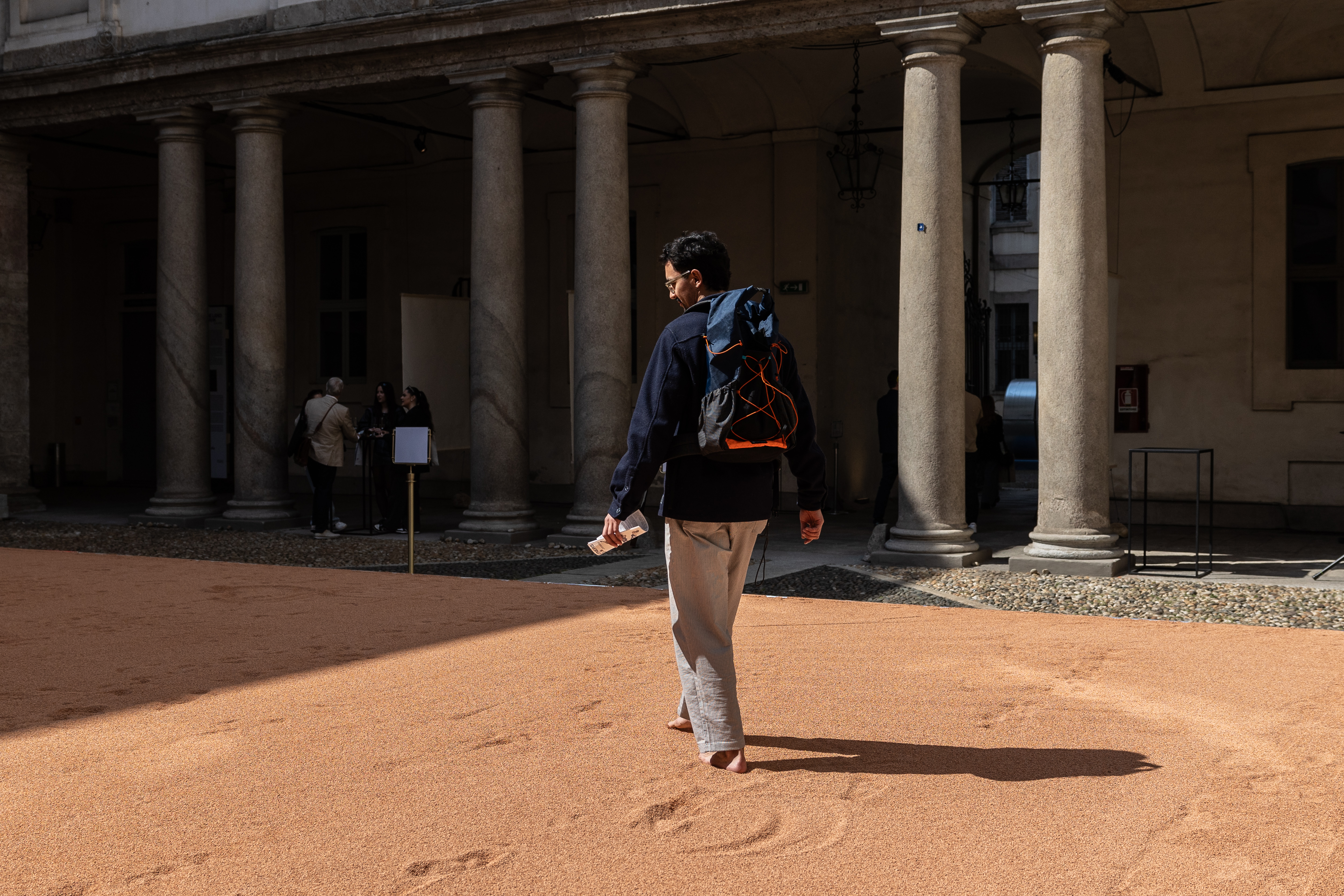Into the fold: Issey Miyake welcomes a new head designer
‘I design clothes – but the message goes beyond fashion,' says head designer Satoshi Kondo, who debuted his collection for S/S 2020

Skateboarders in inflated, parachute-like textiles, brightly coloured dresses floating onto dancers from the ceiling, criss-crossing models sporting painted coats and huge papery sunhats in abstract shapes; when Satoshi Kondo unveiled his inaugural collection as head designer for Issey Miyake at Paris Fashion Week last September, it was a smile-inducing spectacle filled with plenty of freestyle bouncing twirling and laughing.
We caught up with Kondo at the Issey Miyake HQ in Tokyo as he was preparing his sophomore A/W 2020 collection (since shown in Paris in March.) Leafing through early sketches in a bright white showroom (nearby rails of his collection provide splashes of colour), Kondo says: ‘The first idea I had for S/S 2020 was a groyp of people from different regions, ethnicities, generations, all enjoying themelves and having fun together. I saw each model as a flower, blooming at the show's finale. I see this collection as a reflection of my feelings and emotions, expressed in the form of clothing. My designs are connected to a sense of sunao – the idea of being hoenst with yourself – as well as a touch of playfulness. That's what I'm trying to add to the brand.'
Kondo joined Issey Miyake as a designer in 2007. He later became head designer for both its Pleats Please Issey Miyake and Homme Plisse Issey Miyake lines, befor joining Miyake Design Studio three years ago. ‘At Pleats Please, I loved how much freedom there was in its material he says.'

Satoshi Kondo photographed at the Miyake Design Studio in Tokyo in February
The ability to balance traditional craftsmanship and futuristic technical innovations is a quality that defines Issey Miyake and is clearly set to continue under Kondo, who, indicating a pair of green and white S/S 2020 trousers on a nearby rail, explains how the fabric was first hand-plated in signature Issey Miyake style, by workers at a factory in Tohoku, in northeastern Japan, before being transported to Kyoto. Here, artisans specialising in itajime, a traditional Japanese dyeing technique, clamped and dyed the folded material, resulting in its geometric green lines.
RELATED STORY

Kondo's vision for the brand is not just fashion-focused. ‘It's important to work with people who are not necessarily from fashion or design worlds. I rememver Mr Miyake telling me to look at many, many things, not just related to my world, but on a larger scale. I design clothes - but the message goes beyond fashion. There's something positive I want to communicate, and clothing is just a means to express it.’
Information
Wallpaper* Newsletter
Receive our daily digest of inspiration, escapism and design stories from around the world direct to your inbox.
Danielle Demetriou is a British writer and editor who moved from London to Japan in 2007. She writes about design, architecture and culture (for newspapers, magazines and books) and lives in an old machiya townhouse in Kyoto.
Instagram - @danielleinjapan
-
 The new Google Pixel 9a is a competent companion on the pathway to the world of AI
The new Google Pixel 9a is a competent companion on the pathway to the world of AIGoogle’s reputation for effective and efficient hardware is bolstered by the introduction of the new Pixel 9a, a mid-tier smartphone designed to endure
By Jonathan Bell Published
-
 In Milan, MoscaPartners presents a poetic exploration of ‘migration’
In Milan, MoscaPartners presents a poetic exploration of ‘migration’Alongside immersive work by Byoung Cho, MoscaPartners’ Milan Design Week 2025 display features an accessible exhibition path designed for visually impaired visitors
By Cristina Kiran Piotti Published
-
 The making of PAN and Nike’s euphoric, club-inspired collaboration at Milan Design Week
The making of PAN and Nike’s euphoric, club-inspired collaboration at Milan Design WeekAlongside a new Air Max 180 release, ‘The Suspended Hour’ display sees Berlin record label PAN imagine the unfolding of a club night, from dusk until dawn
By Craig McLean Published